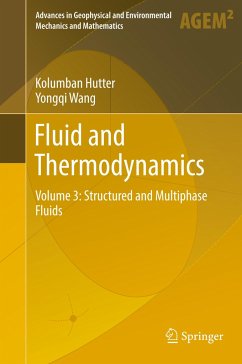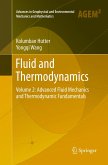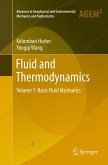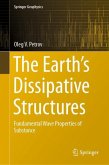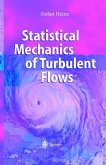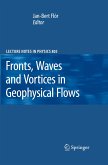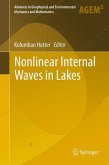This third volume describes continuous bodies treated as classical (Boltzmann) and spin (Cosserat) continua or fluid mixtures of such bodies. It discusses systems such as Boltzmann continua (with trivial angular momentum) and Cosserat continua (with nontrivial spin balance) and formulates the balance law and deformation measures for these including multiphase complexities. Thermodynamics is treated in the spirit of Müller-Liu: it is applied to Boltzmann-type fluids in three dimensions that interact with neighboring fluids on two-dimensional contact surfaces and/or one-dimensional contact lines. For all these situations it formulates the balance laws for mass, momenta, energy, and entropy. Further, it introduces constitutive modeling for 3-, 2-, 3-d body parts for general processes and materially objective variable sets and their reduction to equilibrium and non-equilibrium forms.
Typical (reduced) fluid spin continua are liquid crystals. Prominent nematic examples ofthese include the Ericksen-Leslie-Parodi (ELP) formulation, in which material particles are equipped with material unit vectors (directors). Nematic liquid crystals with tensorial order parameters of rank 1 to n model substructure behavior better, and for both classes of these, the book analyzes the thermodynamic conditions of consistency.
Granular solid-fluid mixtures are generally modeled by complementing the Boltzmann laws with a balance of fluctuation (kinetic) energy of the particles. The book closes by presenting a full Reynolds averaging procedure that accounts for higher correlation terms e.g. a k-epsilon formulation in classical turbulence. However, because the volume fraction is an additional variable, the theory also incorporates 'k-epsilon equations' for the volume fraction.
Typical (reduced) fluid spin continua are liquid crystals. Prominent nematic examples ofthese include the Ericksen-Leslie-Parodi (ELP) formulation, in which material particles are equipped with material unit vectors (directors). Nematic liquid crystals with tensorial order parameters of rank 1 to n model substructure behavior better, and for both classes of these, the book analyzes the thermodynamic conditions of consistency.
Granular solid-fluid mixtures are generally modeled by complementing the Boltzmann laws with a balance of fluctuation (kinetic) energy of the particles. The book closes by presenting a full Reynolds averaging procedure that accounts for higher correlation terms e.g. a k-epsilon formulation in classical turbulence. However, because the volume fraction is an additional variable, the theory also incorporates 'k-epsilon equations' for the volume fraction.
"The authors show the richness of fluid mechanics by articulating topics with mathematical exactitude and approachable style. ... is highly recommended for the bookshelf of every fluid mechanician, physicist, and applied mathematician. The book could also be appropriate as a possible technical elective for upper-class students in engineering, physics, and applied mathematics, or first-year graduate students. Summing Up: Highly recommended. Upper-division undergraduates and above; faculty and professionals." (R. N. Laoulache, Choice, Vol. 54 (10), June, 2017)
"This book is exemplary presented and fills an important gap in the literature, as it has been written specifically for students to acquire the basic knowledge of fluid mechanics and thermodynamics, with particular attention to the topic of boundary layer theory,which is very topcial at present. ... the book delivers an excellent account of what I believe is an appropriate collection of subjects in very topical areas."(Ioan Pop, zbMATH 1352.76002, 2017)
"This book is exemplary presented and fills an important gap in the literature, as it has been written specifically for students to acquire the basic knowledge of fluid mechanics and thermodynamics, with particular attention to the topic of boundary layer theory,which is very topcial at present. ... the book delivers an excellent account of what I believe is an appropriate collection of subjects in very topical areas."(Ioan Pop, zbMATH 1352.76002, 2017)

